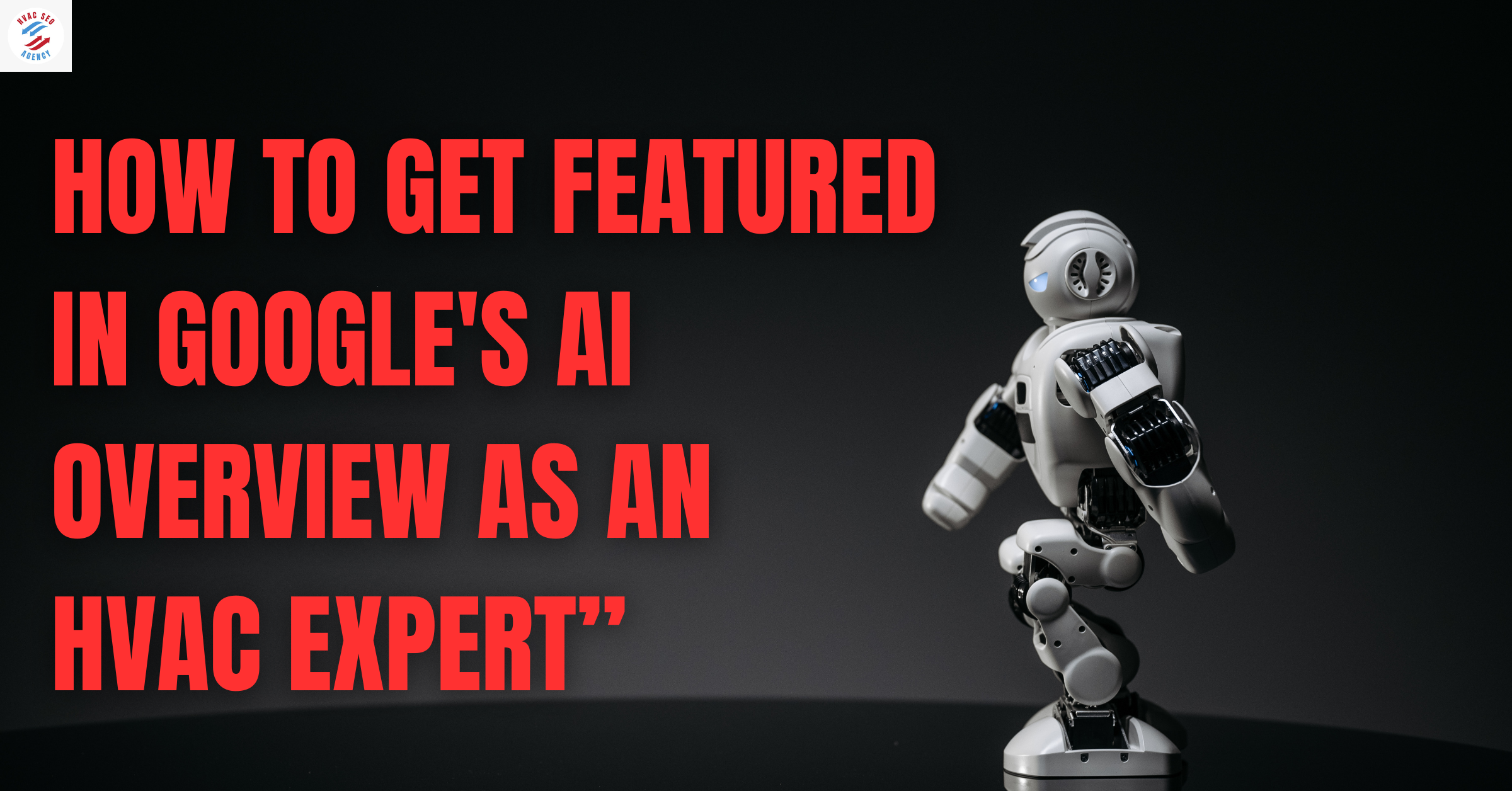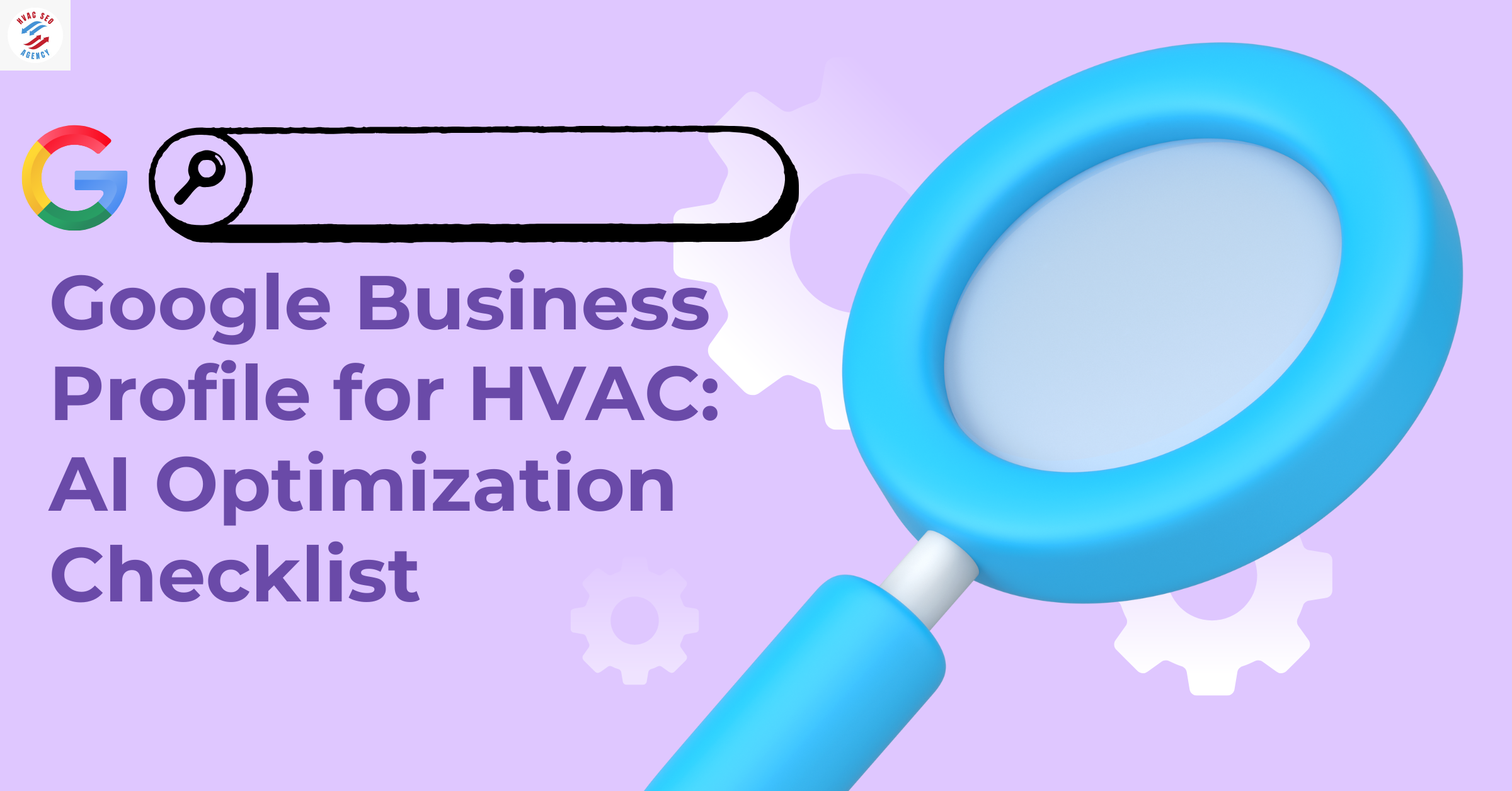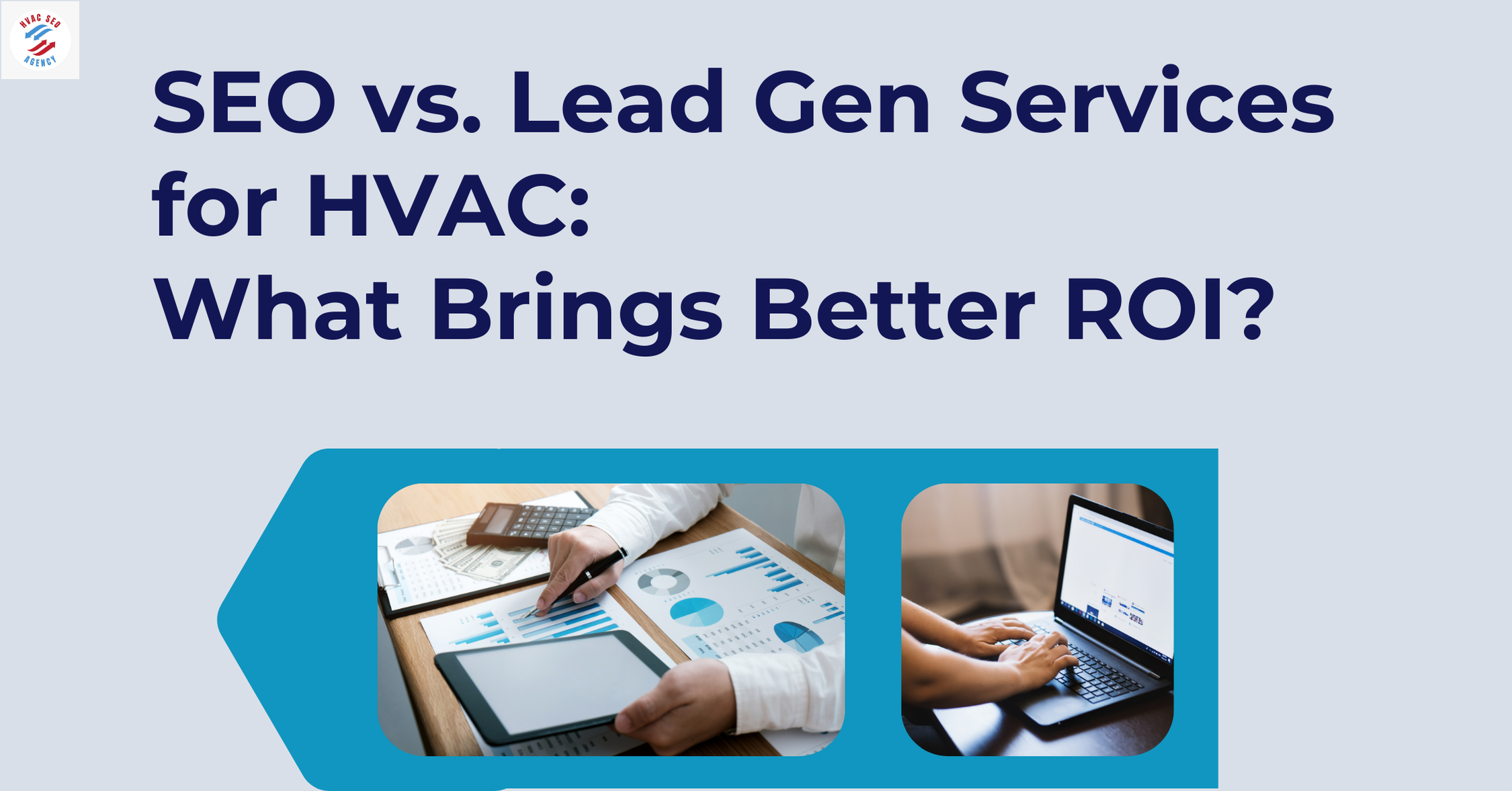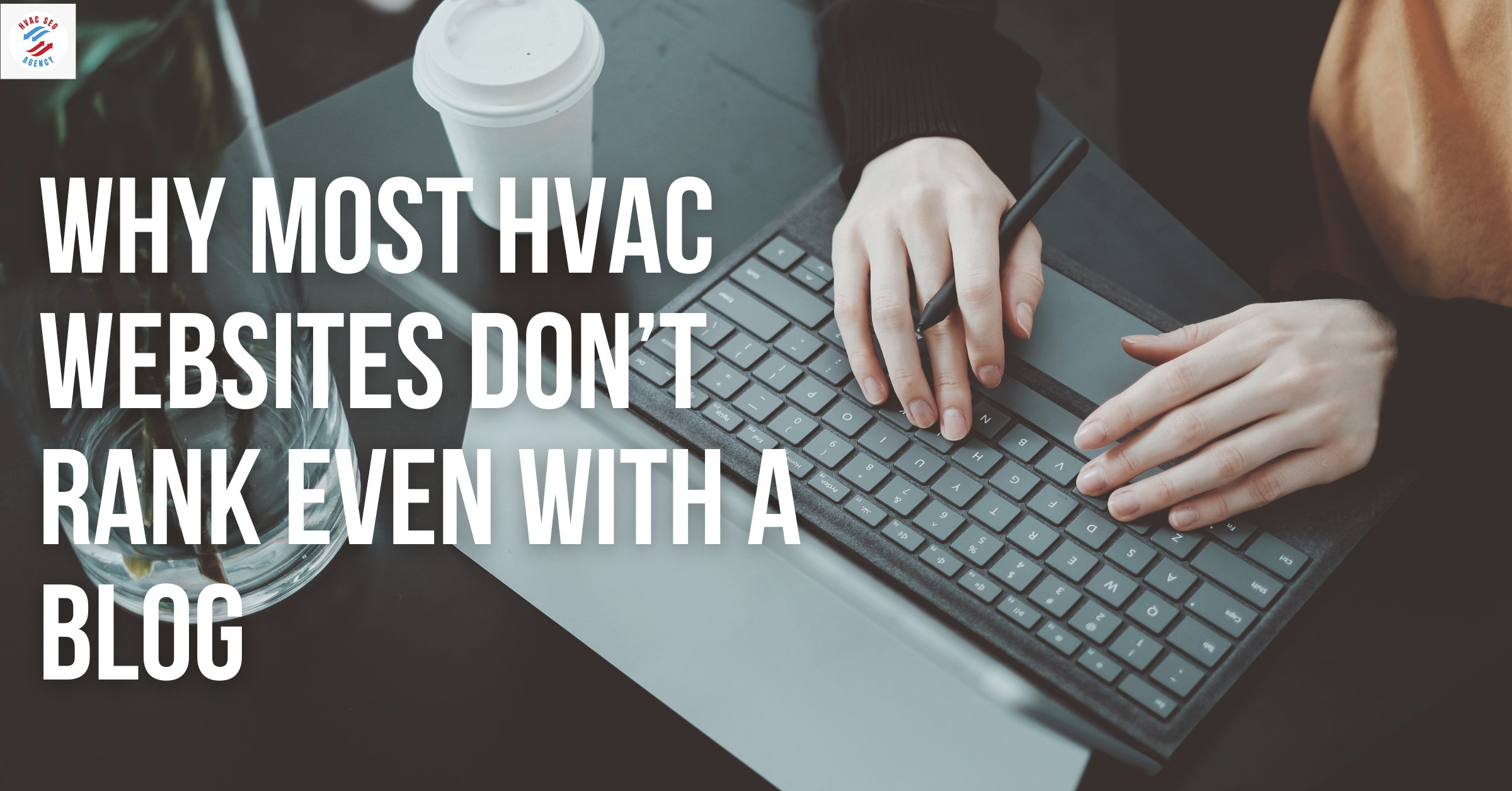HVAC Business Startup Costs: What You Need to Know

1. Understanding HVAC Startup Costs: A Strategic Approach
Starting an HVAC business can be a highly profitable venture, but the initial investment can vary widely depending on your location, business size, and service offerings. HVAC startup costs typically range from $2,000 for a solo technician to $100,000 or more for a medium to large-scale business. The key to success is understanding and planning for both one-time setup costs and ongoing operational expenses.
Why Planning Startup Costs is Crucial for Profitability
Many HVAC entrepreneurs fail to account for hidden expenses, leading to cash flow problems within the first year. A well-planned HVAC business investment ensures you have enough capital for essential purchases, marketing, and operational needs. Businesses that carefully plan their costs and invest in Google My Business Optimization for HVAC tend to attract more local clients and generate profits faster.
Breakdown of HVAC Startup Costs by Business Size
One-Time Costs vs. Ongoing Expenses
Your HVAC startup costs are divided into two categories:
One-Time Costs: Equipment, tools, licensing, business registration, website development, and branding.
Ongoing Costs: Payroll, insurance, vehicle maintenance, marketing, and inventory restocking.
A clear understanding of these costs helps optimize spending and ensures the business remains profitable in the long run. Partnering with an Affordable HVAC SEO Agency can also help minimize marketing expenses while still reaching potential customers effectively.
2. Business Registration and Licensing Costs
Before launching your HVAC business, you must legally register your company, obtain the necessary licenses, and comply with state regulations. Failing to meet these requirements can lead to penalties, legal issues, or business closure.
Choosing the Right Business Structure
Selecting the best business structure impacts your liability, taxation, and financial responsibilities. Here are the common options:
Sole Proprietorship: Ideal for solo technicians, but it offers no liability protection.
Limited Liability Company (LLC): Protects personal assets and offers flexible tax benefits.
Corporation (S-Corp or C-Corp): Best for scaling businesses but involves complex tax structures.
HVAC Licensing and Certification Costs by State
Note: License requirements vary by state. Always check with your local business regulatory authority.
EPA Certification: A Mandatory Requirement
If you handle refrigerants, the EPA 608 Certification is legally required. This certification costs $50-$150 depending on the level (Type I, II, III, or Universal).
Insurance Costs for HVAC Businesses
To protect your business from liability claims and equipment damages, having business insurance is essential. Here’s a breakdown of key insurance types:
Choose a business structure (LLC, Sole Proprietorship, or Corporation).
Register your business and obtain a state HVAC license.
Get EPA 608 Certification for refrigerant handling.
Purchase general liability insurance to protect against damages.
Set up a commercial auto insurance policy for service vehicles.
Google My Business Optimization for HVAC can help local customers easily find your registered HVAC company, boosting credibility and increasing bookings.
3. Equipment and Tools Investment
Starting an HVAC business requires a significant HVAC business investment in essential tools, vehicles, and equipment. Without the right gear, providing high-quality HVAC services becomes impossible. Whether you're a solo technician or planning to scale into a full-service HVAC company, investing in durable and high-efficiency HVAC equipment is crucial for long-term profitability.
Essential HVAC Tools and Equipment
Your HVAC startup costs will heavily depend on the tools and machinery you need for installations, repairs, and maintenance. Below is a list of must-have HVAC tools:
Buying vs. Leasing HVAC Equipment: Which One Saves More?
For new HVAC business owners, choosing between buying and leasing equipment can affect cash flow and overall HVAC startup costs.
Buying Equipment: Pros & Cons
Full ownership of tools and vehicles
No long-term lease commitments
Equipment can be used for years
High upfront costs
Leasing Equipment: Pros & Cons
Lower initial investment
Access to the latest technology
Tax deductions for lease payments
Monthly payments add up over time
Cost-Effective Ways to Lower Equipment Expenses
Buy high-quality used tools from verified resellers to reduce HVAC business investment costs.
Lease service vehicles instead of buying upfront to maintain cash flow.
Purchase in bulk from wholesale HVAC suppliers for better pricing.
4. Office and Operational Setup Costs
Once you've invested in HVAC tools and equipment, setting up a business office is the next step. While many HVAC businesses operate from home, others require a professional office and warehouse space to store inventory and manage operations.
Home-Based vs. Leased Office: Which One is Right for You?
Choosing the right office setup depends on your budget, business size, and service area.
Technology and Software Expenses
Every HVAC business investment must include software and technology to streamline operations. Managing customer requests, appointments, and invoicing manually can lead to errors and inefficiencies.
must-Have Software for HVAC Businesses
HVAC Scheduling & Dispatch Software ($30 - $200/month) – Automates customer bookings
Accounting & Payroll Software ($15 - $150/month) – Manages business finances
GPS Fleet Tracking Software ($50 - $300/month) – Helps track service vans
Recurring Monthly Operational Costs
Running an HVAC business comes with fixed monthly expenses beyond office space. Below is a breakdown:
Pro Tip: Investing in an Affordable HVAC SEO Agency can significantly reduce long-term marketing expenses while ensuring your business ranks higher on Google.
Checklist: Must-Have Office Setup for HVAC Businesses
Choose between a home office or leased space
Set up essential technology (scheduling, invoicing, fleet tracking)
Budget for operational costs (rent, insurance, marketing)
Optimize Google My Business for local visibility
5. Inventory and Supplier Relationships
One of the most overlooked HVAC startup costs is inventory management. Having the right HVAC parts and supplies ready ensures you can handle service calls efficiently. Whether you specialize in installations, repairs, or maintenance, keeping a well-stocked inventory will reduce downtime and increase customer satisfaction.
How Much Should You Budget for HVAC Inventory?
A well-prepared HVAC business needs an initial inventory investment of $5,000 to $20,000, depending on the scale of operations. Businesses that stock up in advance can avoid supply chain disruptions and price hikes.
Bulk Purchasing vs. On-Demand Inventory
Deciding between bulk inventory purchases and on-demand orders depends on cash flow, storage space, and supplier relationships.
Bulk Purchasing (Best for Large-Scale HVAC Businesses)
Lower cost per unit
Reduces supply chain delays
Long-term savings
Higher upfront costs
Requires larger storage space
On-Demand Ordering (Best for Small HVAC Startups)
Minimizes initial HVAC business investment
Requires less storage space
Reduces risk of overstocking
May lead to delays if suppliers run out
Prices may fluctuate
How to Choose Reliable HVAC Suppliers
The right supplier can reduce costs, improve efficiency, and ensure quality. Here’s what to look for:
Competitive Pricing – Compare multiple supplier quotes before committing.
Fast Delivery & Availability – Ensure quick restocking to avoid service delays.
Warranty & Return Policies – Protects against defective HVAC parts.
Partnering with a trusted HVAC supplier can lower inventory costs while ensuring high-quality products, helping your business remain profitable.
6. Marketing and Branding Expenses
Marketing plays a crucial role in the success of an HVAC business. Without a strong online and offline presence, even the best HVAC services may go unnoticed. A well-planned marketing strategy should be included in your HVAC startup costs to ensure a steady flow of customers.
How Much Should You Spend on HVAC Marketing?
A new HVAC business investment should allocate 10-15% of its revenue to marketing efforts. Here’s a breakdown of common marketing expenses:
Website Development: DIY vs. Hiring an SEO Agency
A website is essential for capturing online leads and showcasing services. HVAC businesses can either create a website themselves or hire an Affordable HVAC SEO Agency for better results.
DIY Website (Cost: $500 - $1,500)
Low cost
Full control over design
Easy to update
Limited SEO knowledge
May lack professional appearance
Hiring an HVAC SEO Agency (Cost: $2,000 - $5,000)
Expert SEO optimization
Higher Google rankings
More professional and trustworthy site
Higher upfront cost
Requires ongoing investment
Local SEO and Google My Business Optimization for HVAC
Over 50% of HVAC customers search for services on Google before making a call. Optimizing Google My Business for HVAC can help increase local visibility and bring in more leads.
Key SEO Strategies for HVAC Businesses
Claim & Optimize Google My Business Listing
Use HVAC-related keywords in website content
Get customer reviews to improve trust & ranking
Invest in an HVAC SEO Agency in Atlanta to improve local search rankings
Paid Advertising (PPC) vs. Organic SEO: Which One is Better?
Many HVAC businesses struggle to choose between Google Ads (PPC) and SEO.
Cost-Effective HVAC Branding Tips
Use branded service vans for free local advertising.
List your business on local directories and HVAC industry platforms.
Offer seasonal discounts and referral incentives to attract customers.
By investing wisely in marketing and branding, HVAC businesses can generate consistent leads while keeping costs manageable.
7. Hiring and Payroll Costs
One of the biggest HVAC startup costs for growing businesses is hiring employees. Whether you’re starting solo or planning to build a team, payroll expenses must be carefully calculated. Employee wages, benefits, and training costs can impact profitability but are essential for scaling your HVAC business investment.
Should You Start Solo or Hire a Team?
Many HVAC businesses start as a one-person operation to minimize costs. However, as demand grows, hiring a team becomes necessary to manage multiple service calls efficiently.
HVAC Technician Salary Expectations Across the USA
Salaries for HVAC technicians vary based on experience, location, and company size. Below is an overview of average salaries in different states.
Payroll & Employee Benefits Expenses
Besides salaries, you must budget for additional expenses such as health insurance, workers’ compensation, and payroll taxes.
Many HVAC business owners underestimate hidden expenses that can impact profitability. Factoring in unexpected costs ensures you’re financially prepared for emergencies.
Common Hidden Costs in HVAC Businesses
Unlike other industries, HVAC services fluctuate by season. The peak summer and winter months bring high demand, but fall and spring can be slower periods.
Strategies to Handle Seasonal Downturns
Offer HVAC maintenance plans to keep revenue consistent
Diversify into commercial HVAC contracts
Optimize your Google My Business for HVAC to attract off-season clients
Emergency Fund: How Much Should You Save?
Experts recommend setting aside 3-6 months of operating expenses as a financial buffer. This ensures your business can handle unexpected costs without struggling.
Hiring & Payroll Costs are major HVAC startup costs that should be carefully managed.
Unexpected expenses can disrupt profitability, making an emergency fund essential.
Investing in insurance and off-season revenue strategies helps maintain stability.
9. Funding Options for Your HVAC Business
Securing HVAC business investment is one of the biggest challenges for new business owners. Many entrepreneurs start with personal savings, but small business loans, grants, and alternative funding options can help cover HVAC startup costs without draining personal finances.
One often overlooked strategy to improve cash flow and reduce financial strain is to Build a Customer Loyalty Program for HVAC Businesses. A well-structured loyalty program encourages repeat business, increasing customer retention and recurring revenue. By offering discounts, priority service, or free maintenance checks to loyal customers, HVAC companies can create a steady income stream that reduces the need for heavy external funding.
While securing external investment is crucial, developing long-term revenue strategies like loyalty programs and Google My Business Optimization for HVAC can ensure sustainable profitability without relying entirely on loans or grants..
Best Small Business Loans for HVAC Startups
Several financing options are available for HVAC companies looking to fund equipment, payroll, and marketing expenses.
Grants & Government Funding for HVAC Companies
Unlike loans, grants do not require repayment, making them a valuable source of funding. Some of the best grant programs include:
SBA Small Business Grants – Federal funding for new HVAC startups
State HVAC Energy Efficiency Grants – Available in states promoting green energy solutions
Minority and Veteran Business Grants – Funding for underrepresented entrepreneurs
Pro Tip: Many businesses use Google My Business Optimization for HVAC to attract more clients, increasing cash flow and reducing reliance on loans.
10. Cost Reduction Strategies for Maximum Profitability
Managing HVAC startup costs wisely can increase profit margins while keeping services competitive. Many HVAC businesses overpay for equipment, insurance, and marketing, leading to unnecessary expenses.
Top 5 Ways to Cut Down HVAC Business Expenses
Energy-Efficient Fleet Management to Save Fuel Costs
Fuel expenses can add up quickly, especially for HVAC businesses with multiple service vehicles. Strategies to reduce fuel costs include:
Using GPS Fleet Management – Reduces unnecessary driving routes
Investing in Hybrid or Fuel-Efficient Vans – Saves up to 25% on gas
Regular Vehicle Maintenance – Improves fuel efficiency and longevity
How to Lower Insurance Premiums for Your HVAC Business
Insurance is a mandatory expense, but there are ways to reduce costs:
Bundle multiple insurance policies (General Liability + Workers’ Compensation)
Increase deductibles to lower monthly premiums
Ask for discounts based on claim history and safety records
Digital Marketing: The Best ROI for HVAC Businesses
Traditional print advertising (flyers, newspapers) is expensive and less effective.
Switching to Google My Business Optimization for HVAC and SEO-driven marketing can save thousands per year while bringing in more leads.
Why Invest in an HVAC SEO Agency in [City]?
SEO generates 3X more leads than print ads
Google My Business brings in 80% of local customers
More cost-effective than pay-per-click advertising
By implementing smart cost-cutting measures, HVAC businesses can maximize profits while maintaining top service quality.
11. ROI Estimation: When Will You Break Even?
One of the most critical questions for new HVAC business owners is: "When will I start making a profit?" Understanding the return on investment (ROI) and break-even point is essential when planning your HVAC startup costs. Your break-even point depends on initial investment, pricing strategies, and customer acquisition speed.
How to Calculate Your HVAC Business’s Break-Even Point
Your break-even point is the stage where your total revenue matches your total expenses. To calculate it, use this formula:
Break-Even Point (in months) = Total Startup Costs ÷ Monthly Net Profit
For example, if your HVAC startup costs total $50,000, and your monthly net profit is $5,000, your break-even point is:
$50,000 ÷ $5,000 = 10 months
Estimated Break-Even Timelines for HVAC Businesses
Factors That Influence Your Break-Even Time
Several factors can accelerate or delay your break-even point:
Startup Costs – Higher HVAC business investment means a longer break-even time.
Pricing Strategy – Competitive pricing while ensuring profit margins speeds up ROI.
Marketing & Lead Generation – Investing in an Affordable HVAC SEO Agency can increase leads, reducing the time to profitability.
Seasonality – HVAC businesses tend to earn more during summer and winter, affecting break-even calculations.
Case Study: How an HVAC Business Reached Profitability in 8 Months
A small HVAC business in Texas invested $30,000 in HVAC startup costs and earned $4,000/month in profit after aggressive Google My Business Optimization for HVAC and SEO campaigns. By month 8, they covered all initial expenses and started making pure profit.
Key Takeaways:
Investing in SEO and digital marketing speeds up revenue generation.
Keeping operating costs low shortens the break-even period.
Leveraging seasonal demand (summer & winter) accelerates profitability.
By following cost-efficient strategies, HVAC businesses can reach profitability faster and sustain long-term success.
12. Final Checklist: Preparing for a Profitable HVAC Business Launch
Launching a successful HVAC business requires careful planning, budgeting, and execution. Use this final checklist to ensure you're fully prepared.
Step-By-Step HVAC Business Startup Checklist
Common Mistakes to Avoid When Starting an HVAC Business
Underestimating Startup Costs – Many businesses fail because they miscalculate HVAC startup costs and run out of funds.
Skipping Digital Marketing – Without a strong online presence, you lose valuable leads to competitors using an HVAC SEO Agency in [City].
Not Investing in Training & Licensing – A licensed and well-trained team builds customer trust and credibility.
Growth Strategies for Long-Term Success
Once your HVAC business is profitable, the next step is expanding and scaling operations.
Increase Recurring Revenue – Offer HVAC maintenance contracts for steady cash flow.
Expand Your Service Area – Market in new cities using an HVAC SEO Agency in [City] for better visibility.
Invest in Reputation Management – Encourage customer reviews on Google My Business to build trust.
Final Thoughts
By carefully managing HVAC startup costs and implementing smart growth strategies, HVAC businesses can achieve long-term profitability and become industry leaders.
FAQs
1. How much does it cost to start an HVAC business in the USA?
Answer:
The HVAC startup costs in the USA typically range from $2,000 to $100,000+, depending on the size and scale of the business.
A solo technician (home-based) can start with $2,000 - $10,000.
A small HVAC business (1-3 technicians) needs $10,000 - $50,000.
A medium-sized HVAC company (3-10 technicians) requires $50,000 - $100,000.
A large HVAC firm (10+ technicians) may need $100,000+ in investment.
2. Is an HVAC business profitable?
Answer:
Yes, an HVAC business is highly profitable with the right pricing, marketing, and cost control strategies.
Profit margins in HVAC service & maintenance range between 30%-50%.
Profit margins for HVAC installations typically fall between 10%-20%.
Adding maintenance contracts can provide stable recurring revenue.
3. What is the biggest expense for an HVAC startup?
Answer:
The biggest expenses when starting an HVAC business include:
Service Vehicles – $15,000 - $40,000
HVAC Tools & Equipment – $5,000 - $20,000
Insurance & Licensing – $1,000 - $10,000
Marketing & SEO – $2,000 - $10,000
4. Can I start an HVAC business with no money?
Answer:
Starting an HVAC business without money is difficult but possible if you:
Work as a subcontractor for an existing HVAC company to earn capital.
Lease equipment instead of buying upfront.
Apply for business loans or grants (SBA loans, state HVAC energy grants).
Partner with an investor or business mentor.
5. What kind of insurance do I need for an HVAC business?
Answer:
To legally and safely operate an HVAC business, you need:
General Liability Insurance – Covers property damage & injuries ($500-$2,000/year).
Workers’ Compensation – Covers employee injuries ($1,500-$3,000 per employee).
Commercial Auto Insurance – Covers service vans ($1,200-$2,500 per vehicle).
6. How long does it take to break even in an HVAC business?
Answer:
The break-even time depends on investment size and revenue growth:
7. What is the best state to start an HVAC business?
Answer:
The best states for HVAC businesses are:
Texas – Hot climate, high demand for HVAC services.
Florida – Year-round need for air conditioning.
California – Strict HVAC regulations increase demand for licensed HVAC professionals.
Conclusion: Is an HVAC Business Worth the Investment?
Starting an HVAC business requires a well-planned investment in equipment, marketing, and hiring. With the right financial planning, digital marketing, and service quality, an HVAC business can be highly profitable and sustainable.






